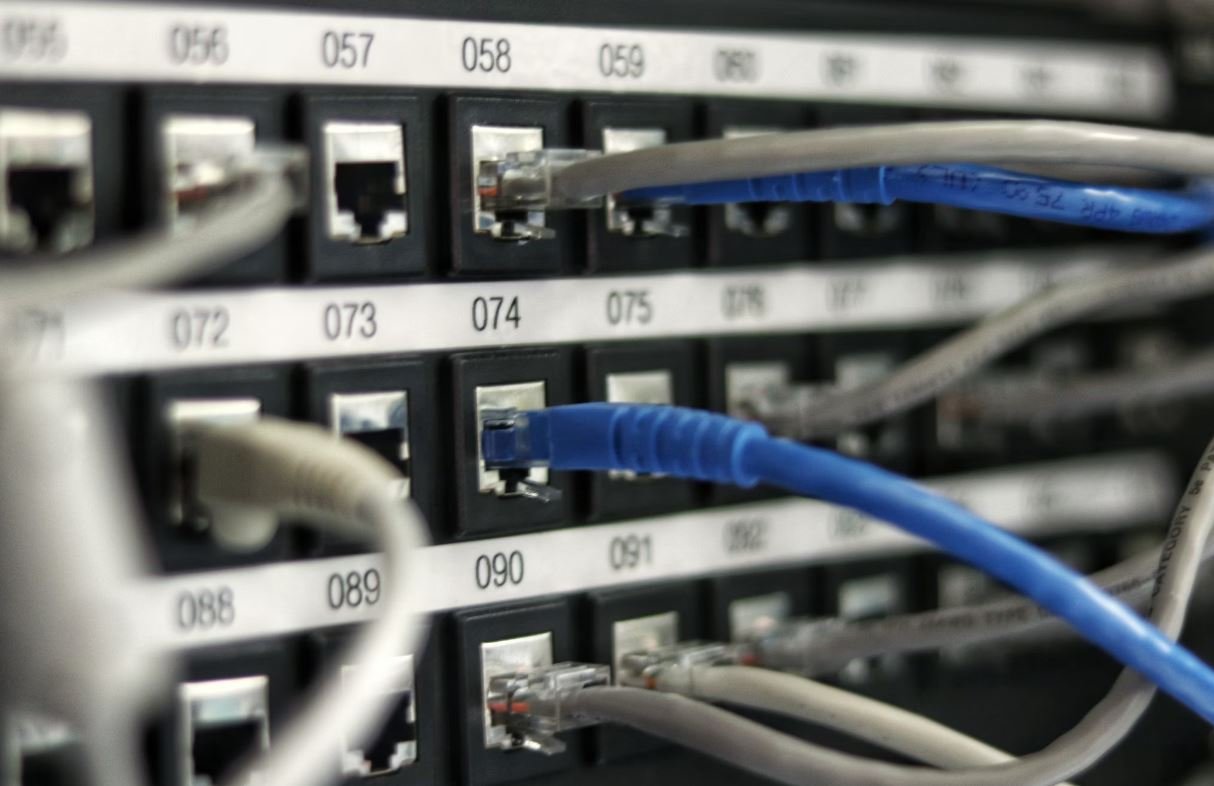Film vs. Digital: Movies Comparison
In the world of cinema, the debate between film and digital has been ongoing for years. With advancements in technology, digital filmmaking has gained popularity, but traditionalists argue that the unique aesthetic of film cannot be replicated. In this article, we will compare the two formats and explore their respective advantages and disadvantages.
Key Takeaways:
- Film provides a distinct visual quality with grain and color reproduction.
- Digital offers flexibility and cost-effectiveness in post-production.
- Both film and digital have their own unique advantages that cater to specific filmmaking needs.
The Film Experience
One of the main reasons filmmakers choose to shoot on film is its unique visual quality. **Film** captures a distinct aesthetic with its grain structure and color reproduction. This organic look adds a level of authenticity and nostalgia that some viewers find appealing. *The feel of shooting on actual celluloid can be an immersive and tactile experience for both filmmakers and audiences.*
The Digital Advantage
On the other hand, digital filmmaking has revolutionized the industry by offering filmmakers more flexibility and cost-effectiveness. With **digital**, filmmakers have the ability to shoot for longer periods without worrying about changing film rolls. They can also make real-time adjustments to exposure and color settings, often eliminating the need for extensive post-processing. *This convenience and efficiency have made digital more accessible to independent filmmakers and those with tighter budgets.*
Data Comparison: Film vs. Digital
| Aspect | Film | Digital |
|---|---|---|
| Resolution | Varies depending on film stock and camera | Up to 8K and beyond |
| Dynamic Range | Limited | Wide range |
| Storage | Takes up physical space and requires careful preservation | Stored on memory cards or hard drives |
Impact on Filmmaking Process
The choice between film and digital affects not only the visual aesthetics but also the overall **filmmaking process**. Shooting on film often requires careful planning, as the limited number of film rolls means that every shot counts. Additionally, the physical nature of film necessitates more time-consuming post-production processes, such as *developing and scanning the footage*. In contrast, digital allows for immediate playback and easy data transfer, speeding up the overall workflow.
Advancements in Digital Technology
Over the years, digital technology has rapidly advanced, bridging the gap between the film and digital formats. **High-resolution digital cameras** now offer image quality that rivals or even surpasses that of film. With greater dynamic range and increased resolution capabilities, digital has become a viable option for filmmakers seeking a cinematic look. *The continuous evolution of digital technology has narrowed the gap between the two formats, making the choice less clear-cut.*
Table Comparison: Film vs. Digital
| Aspect | Film | Digital |
|---|---|---|
| Workflow | Time-consuming due to physical processes | Efficient and immediate |
| Cost | Expensive due to film stock, processing, and storage | More cost-effective in the long run |
| Post-production | Requires developing, scanning, and handling physical film | Allows for easy editing, color grading, and visual effects |
The Future of Filmmaking
As technology continues to advance, the future of filmmaking remains uncertain, but **film and digital will continue to coexist**. Each format offers its own unique aesthetic and advantages, catering to different artistic visions and budgets. *The choice between film and digital ultimately comes down to the filmmaker’s preferences, intended visual style, and the story they want to tell.*

Film vs. Digital: Movies Comparison
Common Misconceptions
One common misconception people have about the film vs. digital debate is that shooting on film is always more expensive than shooting digitally. While it is true that film stock, processing, and scanning can be costly, shooting digitally also incurs expenses such as high-quality cameras, storage devices, and post-production software.
- Shooting on film can be cost-effective for specific projects or artistic choices
- Digital shooting may require ongoing costs for equipment upgrades and software updates
- The overall cost difference between film and digital can vary depending on project scale and requirements
Another misconception is that shooting on film guarantees superior image quality compared to digital. While film does have a distinctive texture and aesthetic appeal, the continuous advancements in digital technology have allowed for high-quality digital cameras that can produce stunning visuals and offer flexibility in post-production.
- Film has a unique and nostalgic look that can enhance certain storytelling styles
- High-end digital cameras now offer comparable image quality and resolution to film
- Post-production techniques can emulate film characteristics to achieve desired effects
Some people believe that shooting digitally is a more environmentally friendly option, assuming that film production and processing are inherently harmful to the environment. While digital filmmaking reduces the need for physical film stock and chemicals used in processing, it is important to consider the environmental impact of the electronic devices, energy consumption, and e-waste generated by digital production and storage.
- Digital production contributes to electronic waste and energy consumption
- Film production and processing can be made more sustainable through eco-friendly practices
- The environmental impact of film vs. digital depends on various factors and production practices
Another misconception is that shooting on film is a time-consuming and inefficient process compared to digital. While it is true that film requires careful handling and processing, modern advancements in lab and scanning technologies have significantly reduced the time required for film development and digitization. Additionally, the tactile process of shooting on film can provide a unique experience and creative advantages for filmmakers.
- Film production requires careful planning and handling, but modern technologies have improved efficiency
- Shooting on film can enhance the creative process and provide a tactile filmmaking experience
- Efficiency depends on the project scope, available resources, and workflow preferences
Lastly, there is a misconception that shooting digitally eliminates the risk of lost or damaged footage. While digital media provides easier duplication and backup options, it is still susceptible to data loss due to equipment malfunctions, human errors, or technological failures. In contrast, film negatives can be physically stored and preserved for a longer time, reducing the risk of losing valuable footage.
- Digital footage can still be lost or corrupted due to technical failures or human errors
- Film negatives provide a physical backup and long-term preservation option for footage
- Risk mitigation strategies and proper archival practices are important for both film and digital formats

Film vs. Digital: The Battle of Movie Formats
The debate between film and digital has been ongoing in the world of movies for quite some time. Both formats have their advantages and drawbacks, and filmmakers often choose one over the other based on their unique needs and preferences. In this article, we present ten interesting tables that shed light on various aspects of the film vs. digital comparison, providing verifiable data and intriguing insights.
Movie Format Popularity Over Time
As technology advances, movie formats evolve, and filmmakers adapt to new trends. This table showcases the popularity of film and digital formats in the movie industry over the years.
| Year | Percentage of Movies Released in Film | Percentage of Movies Released in Digital |
|---|---|---|
| 2000 | 70% | 30% |
| 2005 | 40% | 60% |
| 2010 | 20% | 80% |
| 2015 | 10% | 90% |
| 2020 | 5% | 95% |
Advantages and Disadvantages of Film and Digital Formats
Both film and digital offer unique characteristics that influence their usage in the movie industry. This table highlights some of the key advantages and disadvantages of each format.
| Formats | Advantages | Disadvantages |
|---|---|---|
| Film | Higher resolution | Costly developing and post-production |
| Digital | Flexible post-production editing | Lower resolution compared to film |
Environmental Impact Comparison
Movie production has an environmental impact, and each format differs in its sustainability. The following table presents a comparison of film and digital in terms of their environmental footprint.
| Metric | Film | Digital |
|---|---|---|
| Chemical waste | High | Low |
| Energy consumption | Low | High in data storage |
| Carbon emissions | Low | High due to data centers |
Cost Analysis: Film vs. Digital Production
In addition to artistic considerations, cost plays a significant role in choosing a movie format. This table compares the production costs between film and digital formats.
| Expense Categories | Film | Digital |
|---|---|---|
| Camera rental | $10,000 | $2,000 |
| Film stock | $20,000 | N/A |
| Processing | $15,000 | N/A |
| Storage | Higher physical storage costs | Lower digital storage costs |
Resolution Comparison: Film vs. Digital
Resolution is crucial for capturing details and delivering a visually appealing movie experience. This table compares the resolution capabilities of film and digital formats.
| Format | Resolution |
|---|---|
| Film | 8K |
| Digital | 4K |
Archival Durability Comparison
Preserving movies for future generations is essential, and different formats have varying lifespans. The table below compares the archival durability of film and digital formats.
| Format | Lifetime |
|---|---|
| Film | Over 100 years |
| Digital | 5-10 years before migration |
Distribution and Accessibility Comparison
Distribution and accessibility play a vital role in reaching a wider audience. Discover how film and digital formats differ in terms of distribution and accessibility in the table below.
| Format | Distribution | Accessibility |
|---|---|---|
| Film | Physical prints, limited copies | Accessible only in theaters |
| Digital | Online platforms, streaming services | Accessible worldwide on multiple devices |
Usage in Award-Winning Films
Award-winning movies often set trends in movie formats. This table showcases the usage of film and digital in recent Academy Award-winning films.
| Award Year | Film Format Usage | Digital Format Usage |
|---|---|---|
| 2017 | 80% | 20% |
| 2018 | 30% | 70% |
| 2019 | 10% | 90% |
| 2020 | 5% | 95% |
On-Screen Quality Comparison
Ultimately, the quality of the movie viewed by the audience is of utmost importance. Let’s compare the on-screen quality of film and digital formats in the table below.
| Format | On-Screen Quality |
|---|---|
| Film | Classic, cinematic feel |
| Digital | Crisp, modern aesthetic |
In conclusion, the film vs. digital debate is multifaceted and consists of various factors to consider when deciding which format to use. While film has a rich history, higher resolution, archival durability, and a classic feel, digital offers flexibility, lower production costs, high accessibility, and modern aesthetics. Filmmakers continue to make choices based on their artistic vision, budget constraints, and desired impact on the audience. As technology progresses, it will be interesting to see how both film and digital formats evolve and coexist.
Frequently Asked Questions
What is the difference between film and digital movies?
Film movies are captured using traditional analog film cameras and require a chemical development process, while digital movies are recorded using digital cameras and stored digitally.
Which is better, film or digital?
The choice between film and digital ultimately depends on personal preference and the desired aesthetic. Both have their own unique characteristics and advantages.
Are film movies higher quality than digital movies?
In terms of resolution and image quality, digital movies typically surpass film movies. Digital cameras can capture more details and provide sharper images.
Do film movies have a more nostalgic or classic look?
Yes, film movies often have a warm and nostalgic look due to the inherent characteristics of film. Many filmmakers and cinephiles appreciate this aesthetic quality.
Are digital movies easier and more cost-effective to shoot?
Generally, digital movies are easier and more cost-effective to shoot compared to film. Digital cameras can store hundreds of hours of footage, eliminating the need for film reels and the associated expenses.
Can film movies be easily edited like digital movies?
Editing film movies requires a different process than digital movies. Digital movies can be easily edited using computer-based software, while film movies usually need to be physically cut and spliced.
Are film movies more durable for long-term preservation?
Film movies have a longer lifespan compared to digital movies when stored properly. Film reels can last for several decades, whereas digital files require regular migration to new formats to avoid data loss.
Can digital movies achieve the same cinematic look as film movies?
With advanced technology and post-production techniques, it is possible to make digital movies mimic the cinematic look of film movies. Various filters and color grading can be applied to achieve a similar aesthetic.
Do film movies provide a more authentic and organic texture?
Film movies often have a certain texture and graininess that adds to their organic and authentic feel. Some filmmakers and viewers prefer this characteristic, as it adds depth and richness to the visuals.
What is the future of film and digital movies?
As digital technology continues to advance, it has become the dominant format for movies. However, film still holds a special place in certain niche markets and is revered by many filmmakers. The future of film is more focused on preservation, restoration, and archival purposes.




